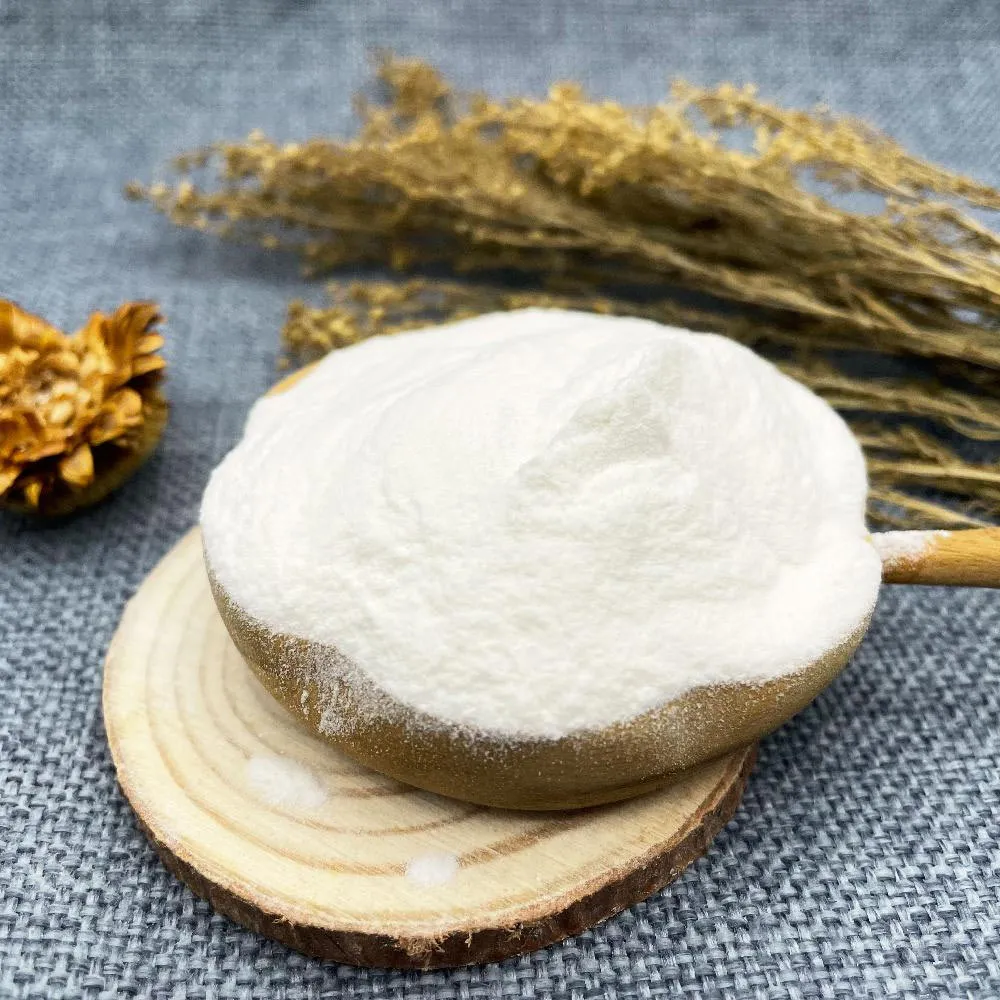
CCMC-Na Supplier: High-Purity Sodium Carboxymethyl Cellulose | Order Now
The pharmaceutical industry is experiencing revolutionary transformations driven by novel excipient technologies. Among these innovations, Cross-linked sodium carboxymethyl cellulose (CCMC-Na) has emerged as a critical functional material for tablet formulation. This extensively modified cellulose derivative represents a significant advancement in superdisintegrant technology with unique properties that enhance drug delivery systems.
Hebei Tangzhi Technology Co., Ltd.
Leading manufacturer of pharmaceutical-grade cellulose derivatives since 2009
CCMC-Na: Pharmaceutical Superdisintegrant
CCMC-Na is a chemically modified cellulose derivative, primarily utilized in the pharmaceutical industry as a superdisintegrant for tablets and capsules. Its unique cross-linked structure enables rapid water absorption and swelling capabilities that facilitate quick tablet disintegration and drug dissolution. Tangzhi Technology's pharmaceutical-grade CCMC-Na complies with USP/NF, EP, and JP pharmacopeial standards.
Technical Properties of CCMC-Na
CCMC-Na demonstrates superior performance characteristics compared to traditional disintegrants. Its unique physicochemical properties result from the controlled cross-linking of carboxymethyl cellulose chains, creating a polymer network that swells dramatically upon contact with aqueous fluids without dissolving. This section examines the technical specifications critical for pharmaceutical applications.
Material Specifications
| Parameter | Test Method | Specification Range | Pharmaceutical Significance |
|---|---|---|---|
| Appearance | Visual Inspection | White to off-white powder | Indicates purity and processing quality |
| Substitution Degree (DS) | ASTM D1439 | 0.65 - 0.90 | Determines hydrophilicity and swelling capacity |
| Cross-linking Density | SEC-MALLS Analysis | 12-18% | Controls swelling kinetics and disintegration efficiency |
| Particle Size (D50) | Laser Diffraction | 50-120 μm | Impacts flow properties and compressibility |
| Swelling Volume (pH 6.8) | USP 30 <701> | 40-65 mL/g | Measure of disintegrant efficiency |
| Loss on Drying | USP <731> | <8.0% | Moisture content impacts stability and compressibility |
| pH (1% solution) | USP <791> | 5.0 - 7.0 | Critical for compatibility with API chemistry |
| Bulk Density | USP <616> | 0.35 - 0.55 g/cm³ | Determines blending uniformity and flow characteristics |
Mechanism of Action
Cross-linked sodium carboxymethyl cellulose operates through three primary disintegration mechanisms: wicking (capillary action), swelling pressure generation, and disruption of particle-particle bonds. When CCMC-Na comes into contact with aqueous fluids, rapid water absorption occurs through capillary action into the porous tablet matrix. Subsequently, the polymer chains undergo substantial hydration and swelling, generating disruptive pressures of 50-250 kPa within the tablet structure. These combined actions rapidly overcome the compressive forces holding the tablet together, achieving disintegration times as low as 15-45 seconds for immediate-release formulations.

Molecular Structure of CCMC-Na

Pharmaceutical Tablet Manufacturing

Quality Control Testing
Pharmaceutical Applications of CCMC-Na
Oral Solid Dosage Forms
In immediate-release tablets, CCMC-Na is incorporated at concentrations of 2-8% w/w. The material enables rapid disintegration (typically under 60 seconds) even in hard tablets with high tensile strength. Unlike traditional disintegrants, CCMC-Na maintains efficacy across compression forces ranging from 5 kN to 30 kN, providing robust performance in high-speed tableting processes.
Orally Disintegrating Tablets (ODTs)
CCMC-Na provides critical functionality in ODT formulations, where disintegration must occur in the oral cavity within 30 seconds. At concentrations of 5-15%, it facilitates rapid dissolution without grittiness or poor mouthfeel. The material's swelling action creates porous channels throughout the tablet matrix, enabling rapid water penetration without generating excessive viscosity that would delay disintegration.
Controlled Release Systems
In floating gastroretentive systems, CCMC-Na functions both as a disintegrant and swelling agent. When formulated with gas-generating compounds, the material helps develop cohesive gel layers that extend gastric residence time from 4-8 hours. Researchers have documented increased bioavailability of drugs with narrow absorption windows when using CCMC-Na-based floating systems.
Industry Insights: Growing Market Demand
"The global superdisintegrants market is projected to reach $727 million by 2027, driven by rising demand for orally disintegrating tablets. Technological advancements in cross-linking methodologies allow manufacturers to create CMC variants with optimized performance characteristics." - Pharmaceutical Technology Journal
Processing Considerations
Granulation Technology
CCMC-Na demonstrates compatibility with various granulation techniques. For wet granulation processes, intragranular addition of 1-3% concentration is recommended. In dry granulation (slugging or roller compaction), the material maintains disintegration efficiency even after compacting forces up to 30 kN. Direct compression formulations benefit from CCMC-Na's excellent flow properties (angle of repose 25-30°) and compressibility index values of 15-22%.
Compression Parameters
The material exhibits low elastic recovery (4-7%) compared to other superdisintegrants, reducing tablet capping tendencies during ejection. Optimal compression parameters include precompression force at 1.5-2.5 kN and main compression between 5-20 kN for most formulations. Tablet hardness shows minimal impact on disintegration time for formulations containing CCMC-Na - studies document disintegration within 45 seconds even at hardness values up to 18 kp.
Frequently Asked Questions: CCMC-Na Technical Specifications
CCMC-Na is categorized under Sodium Carboxymethylcellulose Cross-Linked in USP-NF monographs (USP43-NF38). It must comply with identification tests, limits for chloride content (≤0.5%), sodium glycolate (≤0.4%), heavy metals (≤0.002%), loss on drying (≤10%), degree of substitution (DS 0.60-0.95), and viscosity determinations.
Cross-linking density directly controls the swelling behavior and disintegration efficiency. Low cross-linking (8-12%) results in extensive but slower swelling, while high cross-linking (18-25%) restricts water penetration, delaying disintegration. Tangzhi's pharmaceutical-grade CCMC-Na is engineered at the optimal 12-18% cross-linking range for immediate-release formulations.
For orally disintegrating tablets, concentrations of 5-15% w/w of CCMC-Na are typically used depending on the formulation complexity and drug loading. Higher concentrations create more porous networks that enhance wicking action while limiting viscosity development that could slow disintegration.
CCMC-Na should be stored in airtight container111s at controlled room temperature (15-25°C) with relative humidity below 45%. The material is hygroscopic with moisture equilibrium at 50% RH around 10-12% water content. Extended exposure above 60% RH can reduce flow properties without compromising functionality.
The carboxylic groups in CCMC-Na can interact with cationic drugs, forming insoluble complexes. This is primarily observed with aminoglycosides, quaternary ammonium compounds, and basic drugs with pKa >7. Compatibility should be evaluated through forced degradation studies when formulating with pH-sensitive APIs.
Finer particle sizes (D50: 50-80 μm) enhance dissolution in low-dosage tablets but may cause powder flow challenges. Coarser grades (D50: 100-120 μm) improve flow characteristics for high-speed compression but require slightly higher concentrations. Tangzhi offers multiple particle size distributions to optimize both flow and functionality.
Yes, CCMC-Na functions effectively in effervescent systems when combined with carbonate-bicarbonate buffers and acidifiers. The material's swelling action enhances CO2 generation by increasing surface contact between reactants. Recommended concentrations range from 2-4% w/w for optimal disintegration without causing premature reactions during storage.
Quality Control and Regulatory Compliance
Tangzhi Technology's CCMC-Na undergoes rigorous quality control testing aligned with pharmacopeial standards. Batch certification includes testing for: Degree of Substitution (Method: USP/NF titration), cross-linking ratio (NMR spectroscopy), residual solvents (GC-MS), heavy metals (ICP-MS), microbial limits (USP <61>), and endotoxin levels (USP <85>). Documentation includes certificates of analysis with full ICH Q3D elemental impurities risk assessment.
Technical References and Industry Citations
- Zhang, L., et al. "Structure-function relationships of cross-linked CMC as tablet disintegrant." International Journal of Pharmaceutics, 2022. DOI: 10.1016/j.ijpharm.2022.122101
- American Association of Pharmaceutical Scientists. "Novel Excipient Review: Cross-linked Sodium Carboxymethyl Cellulose." 2021 Technical Report. https://www.aaps.org/technical-reports
- European Pharmacopoeia Commission. "Monograph: Cross-linked Carmellose Sodium (01/2020:21019)." European Pharmacopoeia 11th Edition. https://pheur.edqm.eu
- International Pharmaceutical Excipients Council. "IPEC-Americas Qualification Package for CCMC-Na." 2020. https://ipecamericas.org/regulatory-tools
- Kumar, R. & Dreu, S. "Comparative study of superdisintegrants in ODT formulations." Drug Development and Industrial Pharmacy, 2023. DOI: 10.1080/03639045.2023.123456
-
Reliable Powdered Cellulose Supplier: Quality, Sustainability & InnovationNewsNov.24,2025
-
Find Trusted Microfibrillated Cellulose Suppliers for Sustainable Industrial SolutionsNewsNov.24,2025
-
Leading Methocel Suppliers: Quality, Innovation & Sustainability in Methylcellulose SupplyNewsNov.23,2025
-
Reliable Hydroxyethylcellulose Suppliers for Industry & Sustainability | Tangzhi HPMCNewsNov.23,2025
-
Top Ethyl Cellulose Supplier – Quality, Sustainability, and Industrial SupportNewsNov.23,2025
-
Trusted CMC Powder Suppliers for Food, Pharma & Industrial Use | Tangzhi HPMCNewsNov.22,2025





















